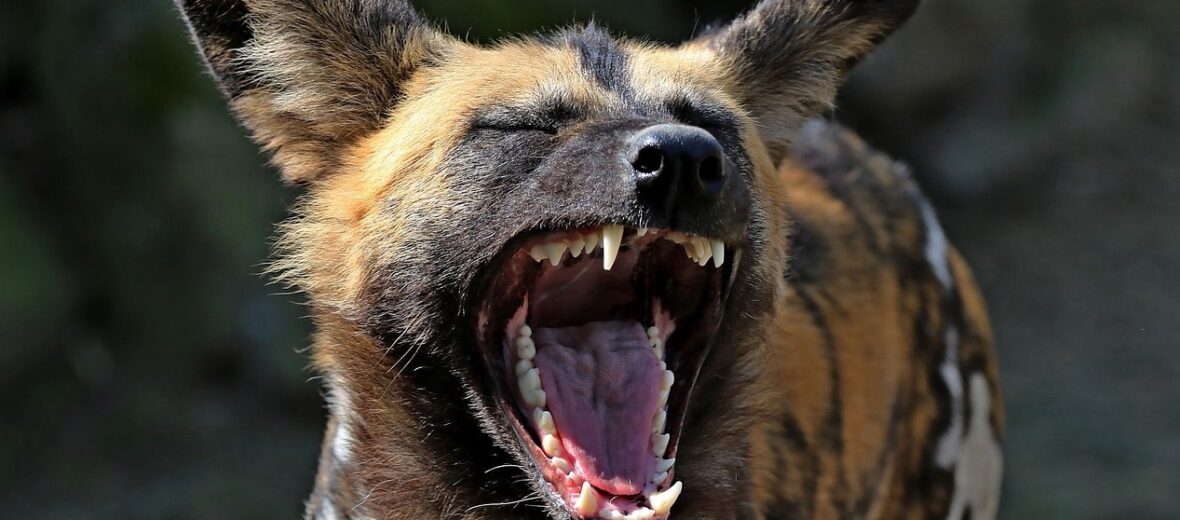
Colorful, quick, nomadic, skillful hunters, and loyal to their pack we have the African wild dog. These dogs used to have a much wider range, but their territory is steadily shrinking due to things like human encroachment via agriculture and mining. These beautiful critters are listed as Endangered by the IUCN.
First the Stats…
Scientific name: Lycaon pictus
Weight: Up to 49 lbs.
Length: Up to 3+ feet, plus their 18 inch tail
Height: Up to 24 inches, at the shoulder
Lifespan: Up to 17 years
Now on to the Facts!
1.) As it is with other pack animals there is a hierarchy that consists of an alpha breeding pair in charge of the group and the rest of the pack members are subordinates.
2.) Being nomadic, the African wild dogs can travel up to 50 miles in a single day! Due to this fact, their territory can encompass 250 to over 900 square miles.
3.) These wild dogs have an approximated 80% kill rate! This is due to their pack hunting strategies.
4.) Their scientific name, Lycaon pictus, means “painted wolf”.
5.) The biggest threat to African wild dogs is humans.
But wait, there’s more on the African wild dog!
6.) The alpha couple is monogamous (mate for life). The alpha female will birth between 4 – 12 pups.
7.) There are five subspecies of wild dog in Africa: the Chadian, the East African, the Cape, the West African, and the Somali.
Did you know…?
It has been attempted in the past to domesticate these dogs but to no avail. They are naturally fearful of humans, and for good reason.
8.) Unlike many other species of canines, once they reach maturity, the males will stay with their pack while females migrate and join new packs.
9.) These colorful critters have just 4 toes per foot. Other dogs, have 5 toes.
10.) When feeding, there is no aggression towards each other and they will share the kill; even with members who may not have been involved in the hunt.
Now a Short African Wild Dog Video!
Also, check out the Critter Science YouTube channel. Videos added frequently!
Want to suggest a critter for me to write about? Let me know here.



